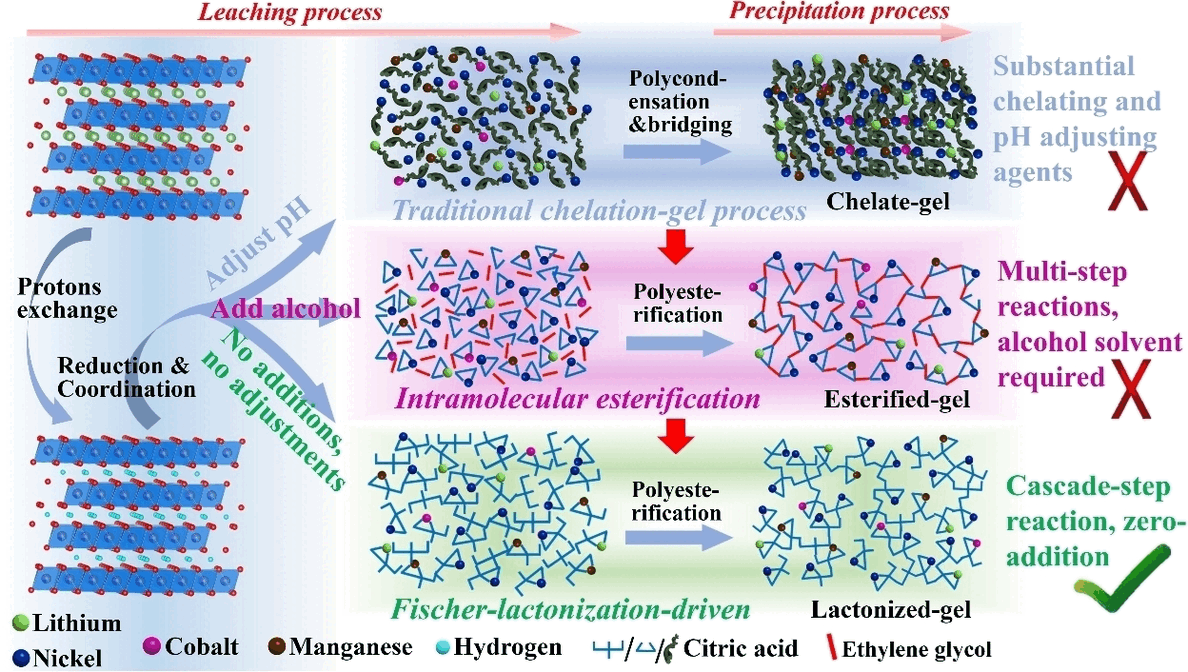Reviewed by Lexie CornerNov 18 2024
A research group from China University of Mining and Technology (Beijing), Fuzhou University, Beijing University of Chemical Technology, and Tsinghua University, Shenzhen (China), led by Guangmin Zhou and Ruiping Liu, has introduced an innovative citric-acid-based method for extracting, isolating, and recovering metals from NCM cathodes. NCM refers to a layered oxide composed of nickel, cobalt, and manganese, with lithium ions intercalated between the layers. The study was published in the journal Angewandte Chemie.

Image Credit: Angewandte Chemie
The eco-friendly, cost-effective, and efficient method offers a promising solution for sustainably recycling spent lithium-ion batteries (LIBs). By using only citric acid, over 99% of lithium, nickel, cobalt, and manganese metals from NCM batteries can be extracted and separated. The recovered materials can then be directly processed into NCM electrodes.
LIBs power a wide range of devices, from smartphones to electric vehicles, and play a crucial role in the transition to renewable energy by storing excess solar and wind energy for later use in the power grid. However, their limited lifespan results in large quantities of spent LIBs, which contain hazardous heavy metals and toxic materials. Additionally, the depletion of metal resources raises growing concerns.
Many recycling methods face challenges such as high energy consumption, significant emissions, or low-quality material recovery. Other methods rely on extensive chemical use, are complex and costly, and produce harmful gases and wastewater. Leaching with biocompatible acids like citric acid offers an alternative, but traditional methods (e.g., chelation-gel processes) require excessive acid and frequent pH adjustments using ammonia, making them less environmentally sustainable.
The key to this new method is the use of a minimal amount of citric acid, unlike traditional approaches that use large quantities. This controlled use allows only two of the three acid groups in citric acid to dissociate.
The released protons break the lithium-oxygen bonds, releasing lithium ions from the NCM structure into the solution. At the same time, bonds between other metal ions and oxygen are disrupted, causing nickel, cobalt, and manganese to enter the solution, where they form stable complexes with the citric acid anions.
The third acid group of citric acid reacts with the hydroxyl group on the same molecule, initiating a ring closure through intramolecular esterification (Fischer lactonization). This process allows intermediates to form a polyester, which solidifies into particles that can be easily separated. This approach significantly reduces energy consumption and CO2 emissions compared to traditional hydrometallurgical recycling techniques.
The resulting gel can be heated to remove the organic component, leaving behind a new NCM lamellar structure containing lithium ions, which can be used as a high-quality electrode for reuse.
Journal Reference:
Zhou, M., et al. (2024) The Fischer‐lactonization‐driven mechanism for ultra‐efficient recycling of spent lithium‐ion batteries. Angewandte Chemie International Edition. doi.org/10.1002/anie.202414484.